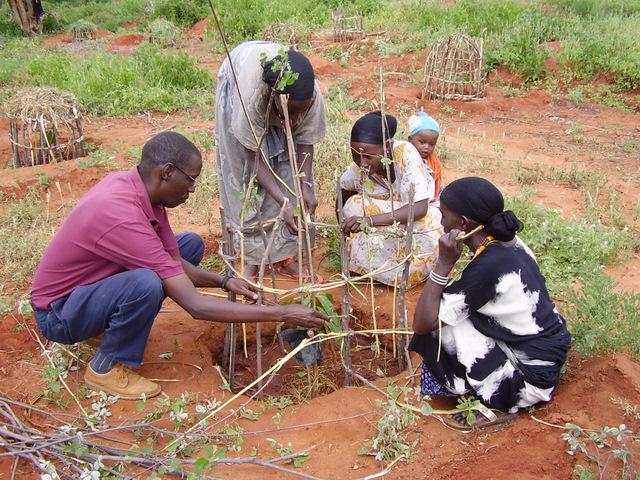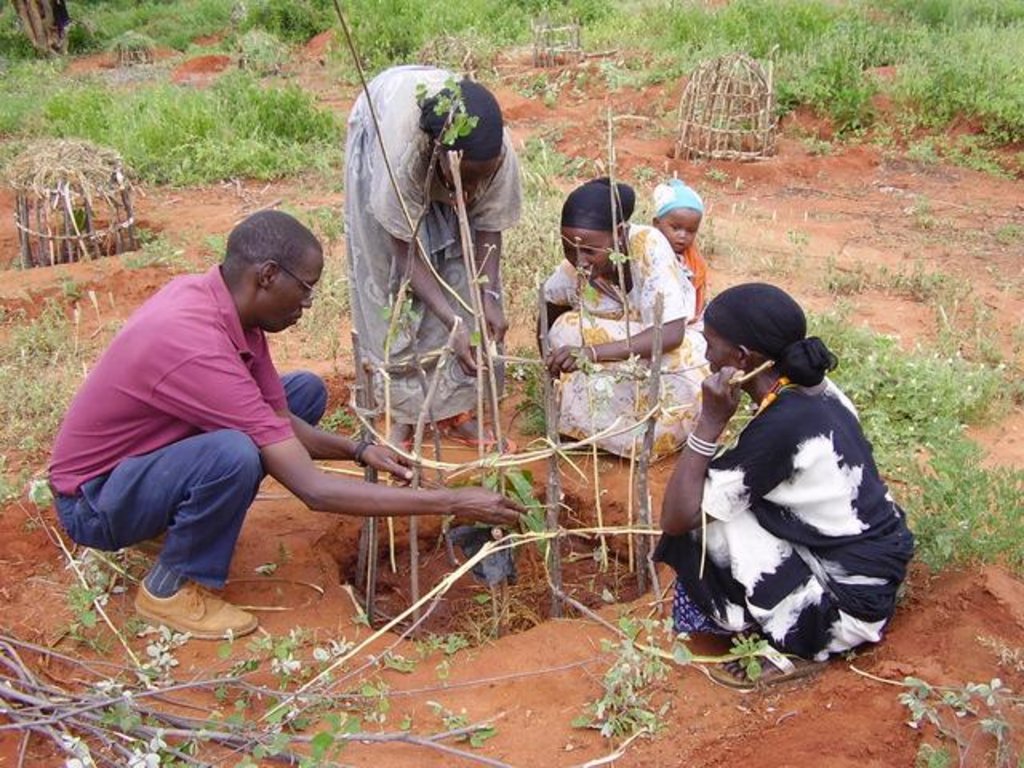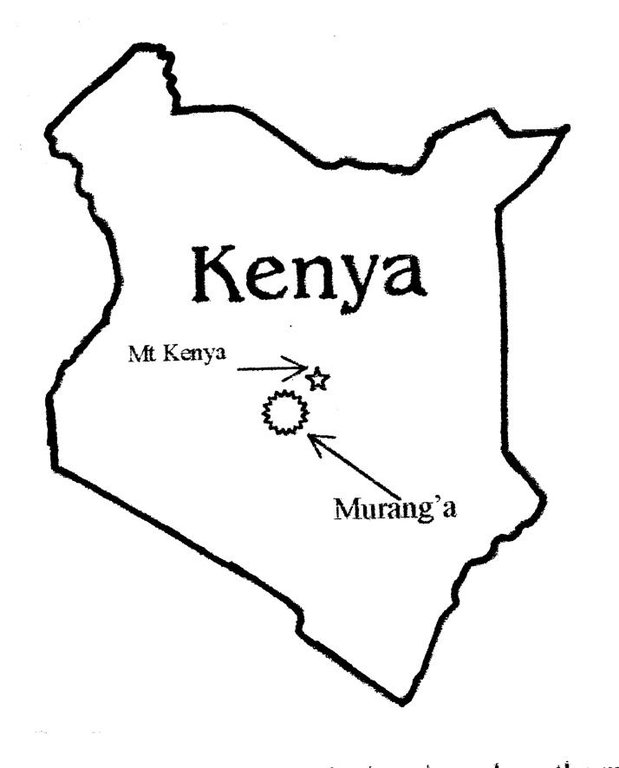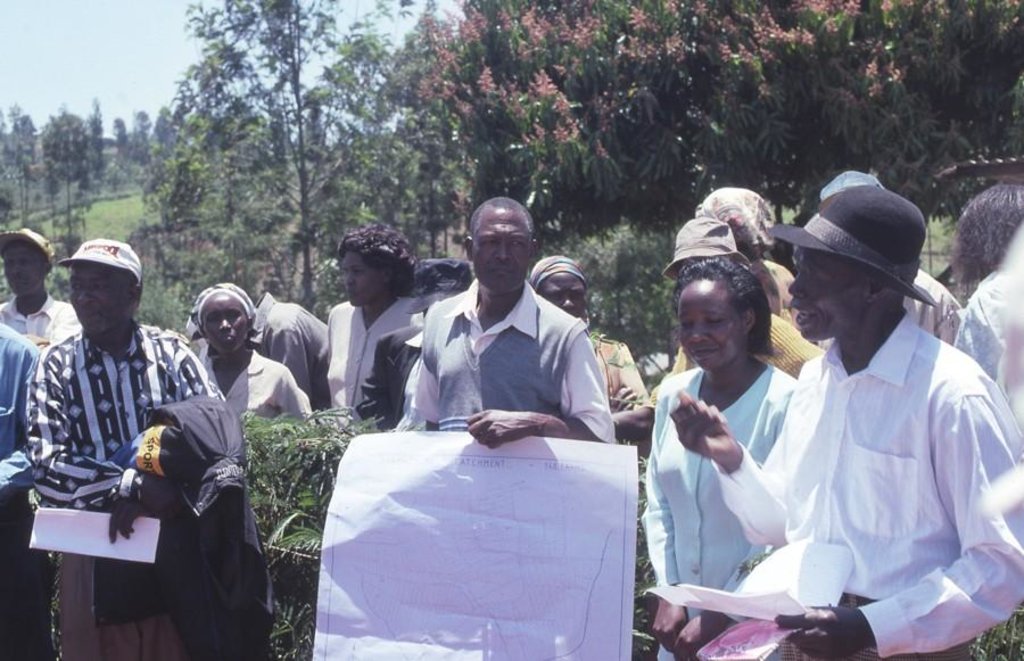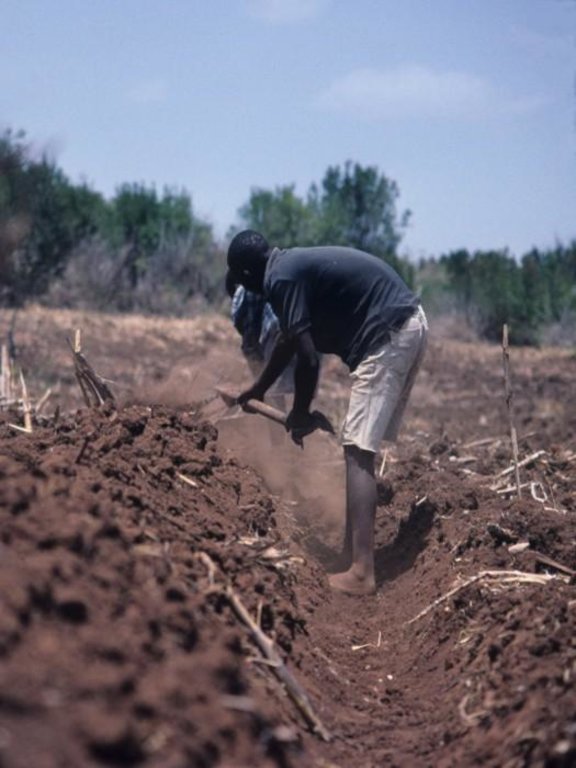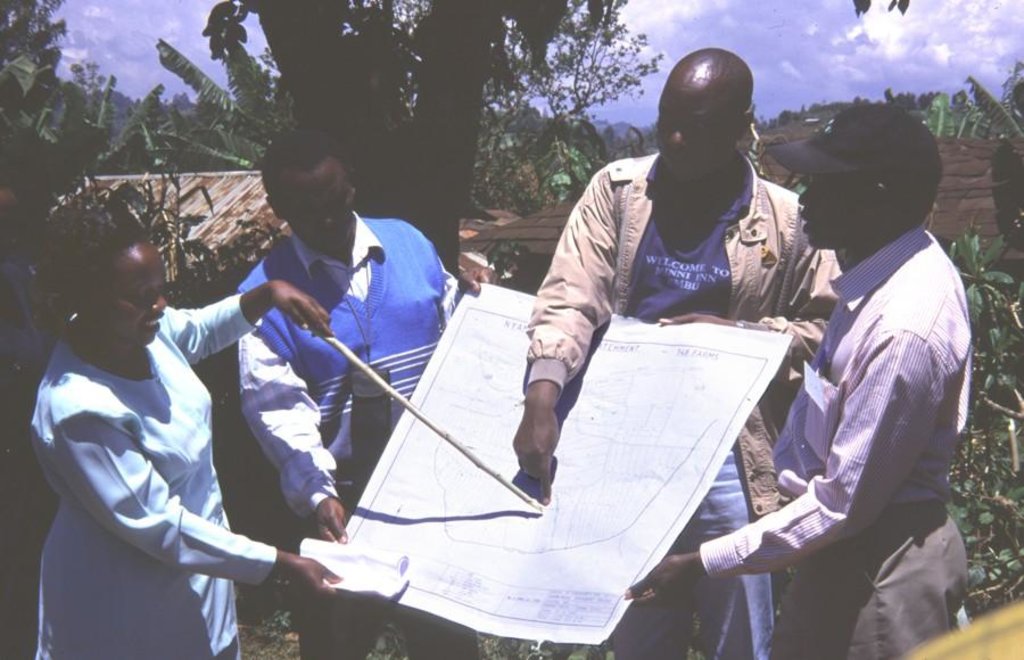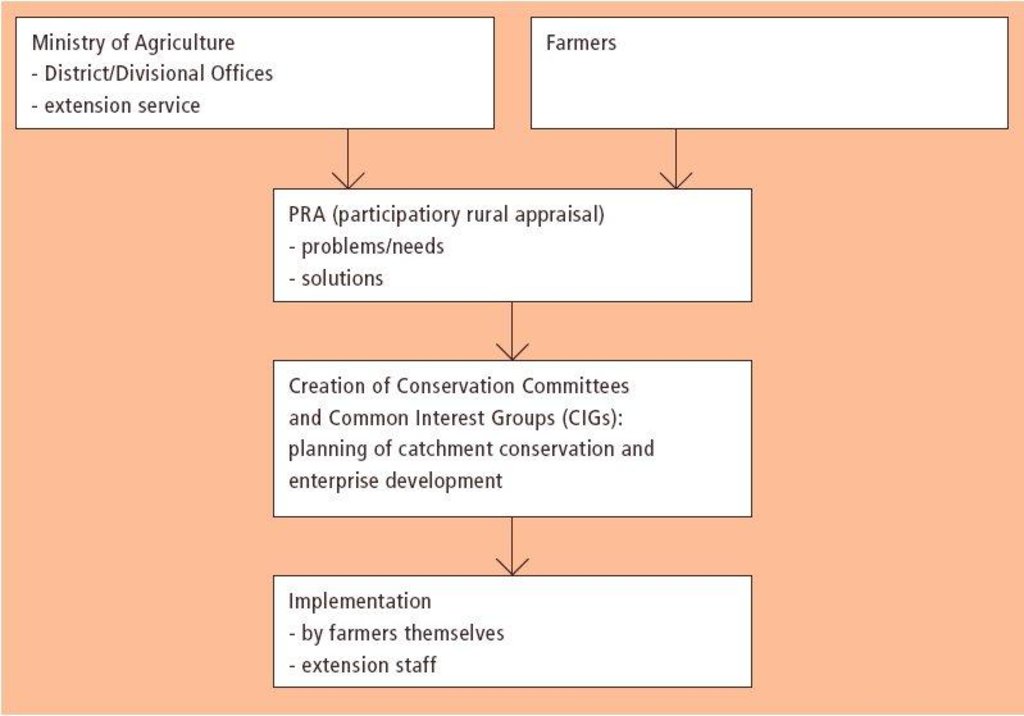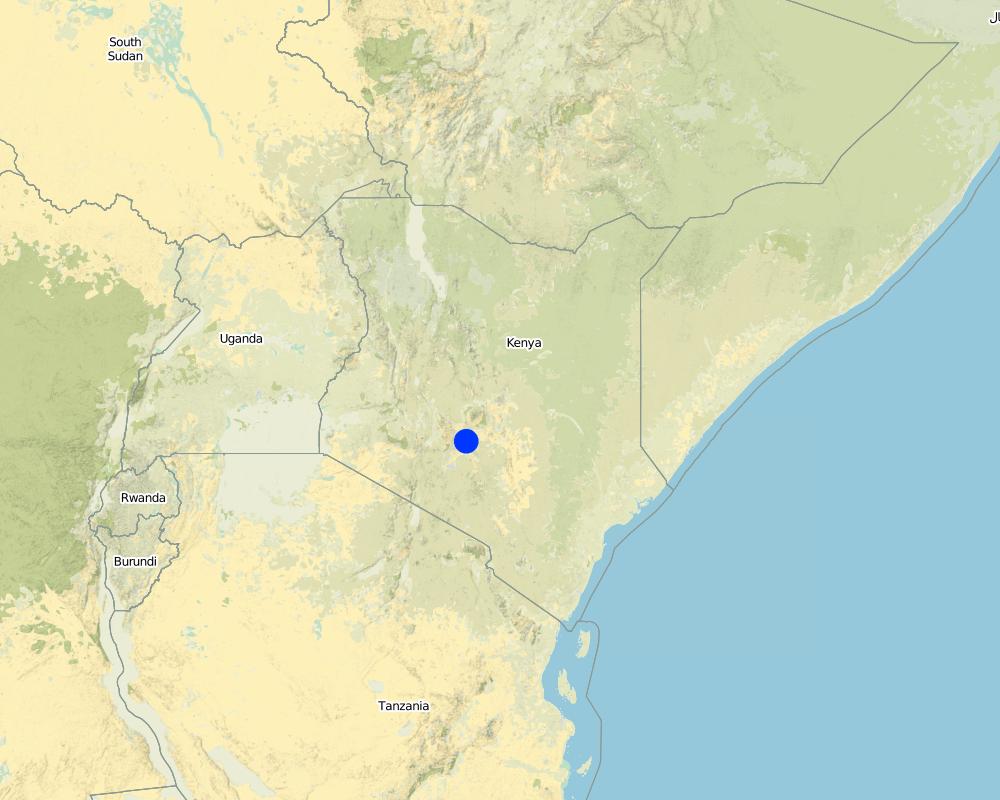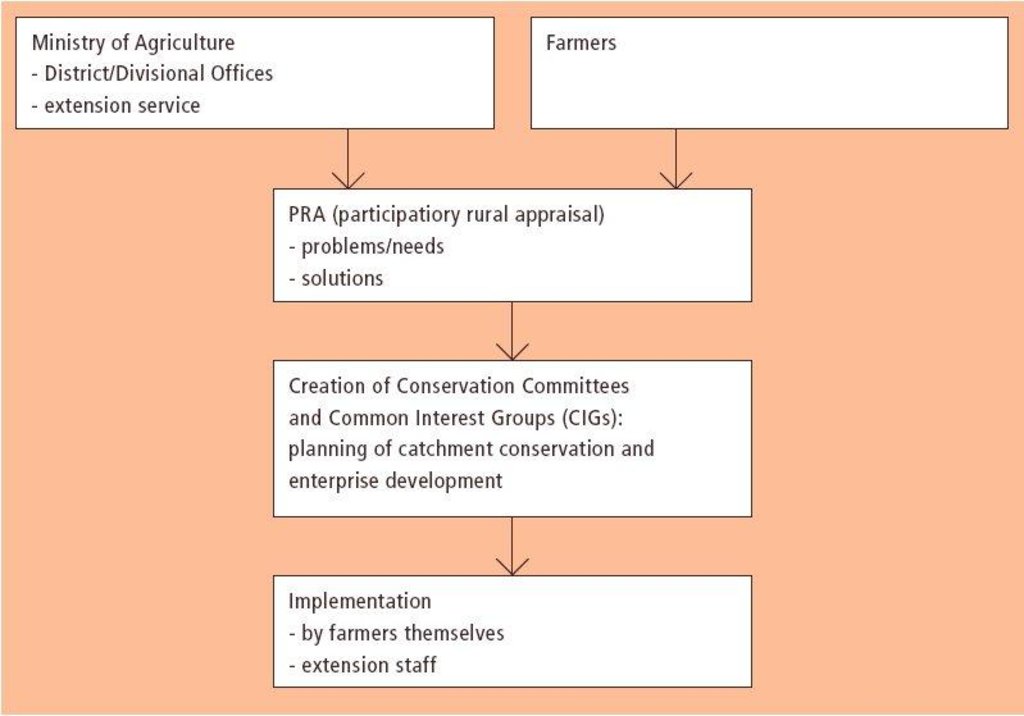Catchment Approach [Kenya]
- Creation:
- Update:
- Compiler: James Gatero Njuki
- Editor: –
- Reviewers: Fabian Ottiger, Deborah Niggli
approaches_2361 - Kenya
View sections
Expand all Collapse all1. General information
1.2 Contact details of resource persons and institutions involved in the assessment and documentation of the Approach
SLM specialist:
Name of project which facilitated the documentation/ evaluation of the Approach (if relevant)
Book project: where the land is greener - Case Studies and Analysis of Soil and Water Conservation Initiatives Worldwide (where the land is greener)Name of the institution(s) which facilitated the documentation/ evaluation of the Approach (if relevant)
Food and Agriculture Organization of the United Nations (FAO) - ItalyName of the institution(s) which facilitated the documentation/ evaluation of the Approach (if relevant)
Ministry of Agriculture and Livestock Development of Kenya (MoA) - Kenya1.3 Conditions regarding the use of data documented through WOCAT
The compiler and key resource person(s) accept the conditions regarding the use of data documented through WOCAT:
Yes
1.4 Reference(s) to Questionnaire(s) on SLM Technologies
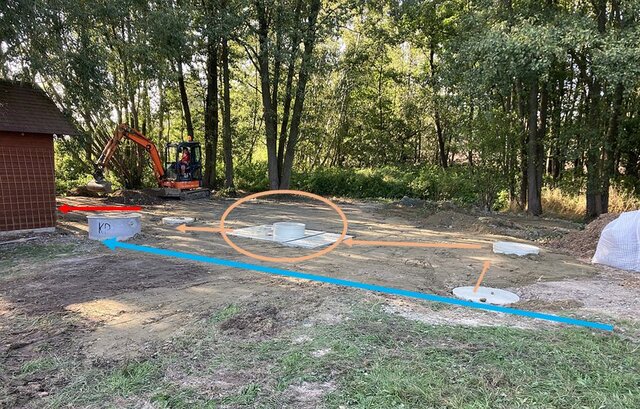
Drainage Biofilter [Czech Republic]
Biofilters or “bioreactors” connected to agricultural tile drains are relatively inexpensive and space-saving measures with considerable potential to improve the quality of drainage water.
- Compiler: Antonín Zajíček
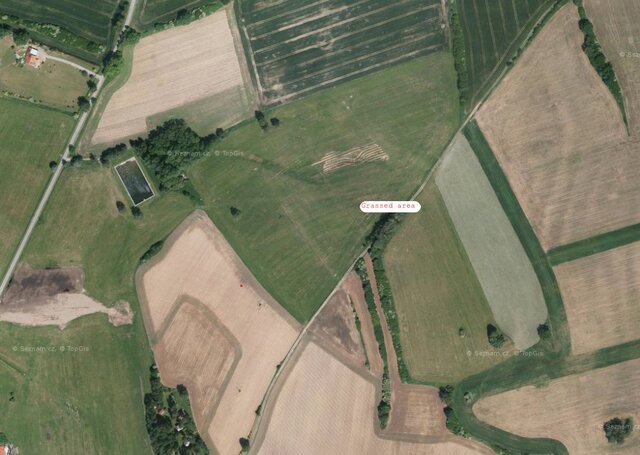
Grassing of Recharge Areas [Czech Republic]
Grassing recharge zones of agricultural drainage systems significantly improves the quality of drainage water. It can be a useful, effective and relatively cheap measure for improvement of shallow groundwater quality.
- Compiler: Antonín Zajíček
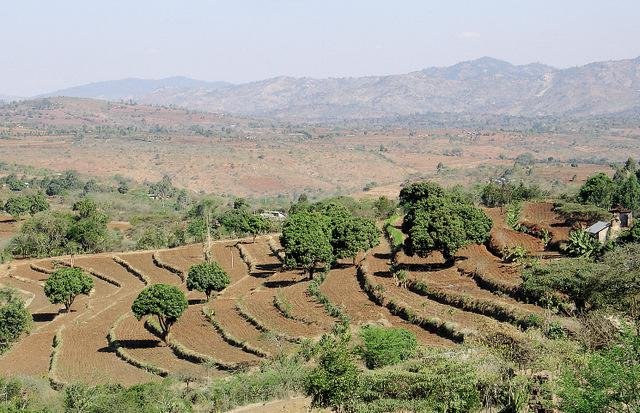
Fanya juu terraces [Kenya]
Terrace bund in association with a ditch, along the contour or on a gentle lateral gradient. Soil is thrown on the upper side of the ditch to form the bund, which is often stabilised by planting a fodder grass.
- Compiler: Kithinji Mutunga
2. Description of the SLM Approach
2.1 Short description of the Approach
A focused approach to integrated land and water management, including soil and water conservation, where the active participation of the villagers - often organised through common interest groups - is central.
2.2 Detailed description of the Approach
Detailed description of the Approach:
The catchment approach promotes sustainable land management systems by conservation of a defined area (so-called micro-environments) through the active participation of the communities living there. It was launched in Kenya in 1988 to achieve greater technical and social impact - and at a more rapid pace - than the previous focus on individual farmers. This case focuses on a single catchment in a subhumid area of Central Kenya. The emphasis is on structural measures - especially fanya juu terraces - but vegetative systems are promoted also. Other activities are supported such as spring protection, improved crop and animal husbandry, agroforestry, fodder production, fish ponds and others. The specific objectives are to stimulate the implementation of a variety of SWC measures leading simultaneously to improved production. Each approach area is defined by cultural/administrative boundaries rather than strict hydrological watersheds or catchments (as its name confusingly implies).
A conservation committee is elected from amongst the focal community before problem identification begins. Technical staff from relevant government and non-government agencies (NGOs) are co-opted onto the committee. The approach then involves participatory methods of appraisal and planning of solutions. Land users, together with the co-opted subject matter specialists, pool their knowledge and resources. Common Interest Groups (CIGs) are formed, with the aim of self-help promotion of specific farm enterprises. Training is given to the members of the CIGs by the Ministry of Agriculture. The farmers carry out the majority of the work themselves: monetary or other tangible incentives are few. The end result is the micro-environment (catchment area) conserved for improved production, and left in the hands of the community to maintain and sustain.
The catchment approach was developed under the National Soil and Water Conservation Programme - supported by (Swedish) Sida - and continues to be promoted as the Focal Area Approach (FAA) under the National Agricultural and Livestock Extension Programme (NALEP), which is again supported by Sida. However, under NALEP there is less emphasis on soil and water conservation than the previous programme, and more focus on promotion of productive enterprises.
The catchment approach is linked to cultural or administrative boundaries, rather than to hydrological watersheds. This emphasis on social units and integrated land management is becoming more common worldwide. In Kenya the approach is constantly evolving and has recently been renamed the 'Focal Area Approach'.
2.3 Photos of the Approach
2.5 Country/ region/ locations where the Approach has been applied
Country:
Kenya
Region/ State/ Province:
Central Province /Muranga District/Kangema divi
Further specification of location:
Centre latitude:-0.721 Centre longitude:: 37.156
Map
×2.6 Dates of initiation and termination of the Approach
Indicate year of initiation:
1987
Year of termination (if Approach is no longer applied):
2000
2.7 Type of Approach
- project/ programme based
2.8 Main aims/ objectives of the Approach
The Approach focused mainly on SLM with other activities (The approach also included other activities like energy saving technologies and Agroforestry. It also involved collaboration with othe sectors like public health, fisheries, water. Also new technologies were introduced like water prospecting.) The main aims are to contribute to increased production among farmers and pastrolist through advise on sound land husbandry, conserve agricultural lands affected by erosion, create awareness on importance of soil conservation and introduce on-farm tree planting practices.
The SLM Approach addressed the following problems: lack of tangible and assessable impact of SWC activities, technically or socially, slow implementation of SWC, underlying problems of poverty, declining soil fertility, soil erosion and fuelwood shortage.
2.9 Conditions enabling or hindering implementation of the Technology/ Technologies applied under the Approach
availability/ access to financial resources and services
- hindering
Lack of capital hinders farmers from investing in structures.
Treatment through the SLM Approach: farmers to work in group so that they can pool resources.
institutional setting
- hindering
There was no institutional linkages to provide synergy
Treatment through the SLM Approach: collaboration forums through PRA were encouraged.
legal framework (land tenure, land and water use rights)
- enabling
The existing land ownership, land use rights / water rights moderately helped the approach implementation: Most land is individually owned, so there is no problem in that situation. Where land is rented, land users need to be persuaded to co-operate.
knowledge about SLM, access to technical support
- hindering
Lack of knowledge on better ways of conservation.
Treatment through the SLM Approach: training was carried out through courses, fielddays and demonstration.
3. Participation and roles of stakeholders involved
3.1 Stakeholders involved in the Approach and their roles
- local land users/ local communities
Working land users were work equally divided between men and women. Groups consist out of both. Many joint activities but men and women still stick to some traditional gender-related agricultural activities. For example women often concentrate on food crops, men on cash crops. The poor resource group has been involved by participating in trainings, in election of catchment committee and during committee meetings.
- SLM specialists/ agricultural advisers
- teachers/ school children/ students
- national government (planners, decision-makers)
Ministry of Agriculture, politicians
3.2 Involvement of local land users/ local communities in the different phases of the Approach
| Involvement of local land users/ local communities | Specify who was involved and describe activities | |
|---|---|---|
| initiation/ motivation | interactive | public meetings; they were involved in making decisions on boundaries. |
| planning | interactive | rapid/participatory rural appraisal, public meetings, interviews/questionnaires; they were involved in providing information during the PRA and also the formulation of the community action plan |
| implementation | self-mobilization | responsibility for major steps; they were invoved in the actual work in the farms. implemented by community members |
| monitoring/ evaluation | passive | Mainly: interviews/questionnaires; partly: reporting; |
| Research | none | only during trainings |
3.3 Flow chart (if available)
3.4 Decision-making on the selection of SLM Technology/ Technologies
Specify who decided on the selection of the Technology/ Technologies to be implemented:
- mainly land users, supported by SLM specialists
Explain:
Land user driven (bottom-up). The choice on the technology to use is made primarily by the technical specialists based on the prevalent type of erosion on each farm and farmers preference.
Decisions on the method of implementing the SLM Technology were made by mainly by land users supported by SLM specialists. Land user driven (bottom-up). The method of implementation is decided based on the farmers capabilities and resources at his disposal e.g. where labour is a constraint and finances limiting, biological conservation measures would be considered more.
4. Technical support, capacity building, and knowledge management
4.1 Capacity building/ training
Was training provided to land users/ other stakeholders?
Yes
Specify who was trained:
- land users
- extensionists/trainers, school children/students (2), teachers (3)
Form of training:
- on-the-job
- farmer-to-farmer
- demonstration areas
- public meetings
- courses
Subjects covered:
including layout of measures; agroforestry; soil erosion and measures to control it; energy conservation; food preservation - as well as for specific farm enterprises. Carried out mainly through farm visits by Ministry of Agriculture agents.
4.2 Advisory service
Do land users have access to an advisory service?
Yes
Specify whether advisory service is provided:
- on land users' fields
Describe/ comments:
Name of method used for advisory service: Catchment Approach: Formation of Conservation Committees. Implementation of techniques/technologies, Training on techniques/technologies, farm visits, field demonstrations, field days.
Advisory service was carried out through: Government's existing extension system (Both generalists and SWC specialists.) Extension staff: Mainly government employees.
Advisory service is quite adequate to ensure the continuation of land conservation activities; There are extension staff posted at locational level who are well trained.
4.3 Institution strengthening (organizational development)
Have institutions been established or strengthened through the Approach?
- yes, moderately
Specify the level(s) at which institutions have been strengthened or established:
- local
Specify type of support:
- capacity building/ training
4.4 Monitoring and evaluation
Is monitoring and evaluation part of the Approach?
Yes
Comments:
bio-physical aspects were regular monitored through observations
technical aspects were ad hoc monitored through measurements
socio-cultural aspects were ad hoc monitored through observations
area treated aspects were regular monitored through observations
no. of land users involved aspects were regular monitored by 0 through measurements; indicators: None
management of Approach aspects were ad hoc monitored by 0 through observations; indicators: None
There were few changes in the Approach as a result of monitoring and evaluation: There have been few changes, but there is some enhanced collaboration between agencies, and - more income generating activities have been identified and implemented through common interest groups for crop production, marketing and livestock.
4.5 Research
Was research part of the Approach?
Yes
Give further details and indicate who did the research:
Specific problems are researched as they arise. A strong research-extension linkage is being built up. Monitoring of the progress of the overall programme also takes place.
5. Financing and external material support
5.1 Annual budget for the SLM component of the Approach
If precise annual budget is not known, indicate range:
- < 2,000
Comments (e.g. main sources of funding/ major donors):
Approach costs were met by the following donors: international (SIDA/trainnig, transport allowances etc): 70.0%; government (national - Office, personell): 20.0%; local community / land user(s) (Labour, materials): 10.0%
5.3 Subsidies for specific inputs (including labour)
- equipment
| Specify which inputs were subsidised | To which extent | Specify subsidies |
|---|---|---|
| tools | Given to catchment committee for use in catchment | |
- agricultural
| Specify which inputs were subsidised | To which extent | Specify subsidies |
|---|---|---|
| seeds | Tree seeds for group nursery establishment | |
If labour by land users was a substantial input, was it:
- voluntary
Comments:
All labour is provided on a voluntary basis.
5.4 Credit
Was credit provided under the Approach for SLM activities?
Yes
Specify conditions (interest rate, payback, etc.):
This is not provided directly, though a savings and credit 'stakeholder kitty' revolving fund is being promoted and developed.
6. Impact analysis and concluding statements
6.1 Impacts of the Approach
Did the Approach help land users to implement and maintain SLM Technologies?
- No
- Yes, little
- Yes, moderately
- Yes, greatly
Intensified use of manures. The land user also adopted the construction of retention ditches. The improvements to SWC are moderate: these have been mainly through fanya juu and level bench terraces
Did the Approach improve issues of land tenure/ user rights that hindered implementation of SLM Technologies?
- No
- Yes, little
- Yes, moderately
- Yes, greatly
The approach through catchment committee was able to persuade the prople leasing land to undertake conservation measures.
Did other land users / projects adopt the Approach?
- No
- Yes, little
- Yes, moderately
- Yes, greatly
Spread has been limited to one Non-Governmental Organisation in this particular case study area.
- No
- Yes, little
- Yes, moderately
- Yes, greatly
6.3 Sustainability of Approach activities
Can the land users sustain what has been implemented through the Approach (without external support)?
- uncertain
If no or uncertain, specify and comment:
Interventions are likely to continue and be maintained, but this depends on common interest groups continuing to function actively.
6.4 Strengths/ advantages of the Approach
| Strengths/ advantages/ opportunities in the land user’s view |
|---|
| Much improved extension/training - research linkages have been forged (How to sustain/ enhance this strength: Continue focussed training/strengthen research-extension linkage.) |
| New and productive farm enterprises have been promoted under the catchment approach alongside better SWC (How to sustain/ enhance this strength: Continue to introduce/support where appropriate through Common Interest Groups.) |
| Strengths/ advantages/ opportunities in the compiler’s or other key resource person’s view |
|---|
| Genuine community participation has been achieved under this approach (How to sustain/ enhance this strength: Continue with participatory training.) |
| There is evidence of 'ownership' by the community which implies a feeling that what has been achieved is due to communal efforts and belongs to them (How to sustain/ enhance this strength: Further training is more effective when benefits are appreciated in this way.) |
6.5 Weaknesses/ disadvantages of the Approach and ways of overcoming them
| Weaknesses/ disadvantages/ risks in the land user’s view | How can they be overcome? |
|---|---|
| Lack of material incentives like seeds and fertilizers | Assist the farmers with the credit. |
| Weaknesses/ disadvantages/ risks in the compiler’s or other key resource person’s view | How can they be overcome? |
|---|---|
| In many places there is a lack of availability of inputs | Provide better credit facilities for CIGs/farmers generally. |
| Technologies tend to be implemented uniformly, not site-specifically | SWC practices should be matched to each particular situation, eg structural measures such as fanya juu terraces should be promoted only where necessary, that is where agronomic and vegetative measures do not provide sufficient protection. |
| As yet uncertainty about continuation in specific areas if direct support stops after only one year | Don't abruptly terminate this support after one year: continue approach for at least two or three years in each catchment (approach area). |
| inadequate funding | Increase the funding. |
| Too small an area (of the country) is currently covered by NALEP | More staff required: more effective use of staff. |
7. References and links
7.1 Methods/ sources of information
- field visits, field surveys
- interviews with land users
7.2 References to available publications
Title, author, year, ISBN:
The catchment approach is linked to cultural or administrative boundaries, rather than to hydrological watersheds. This emphasis on social units and integrated land management is becoming more common worldwide. In Kenya the approach is constantly evolving and has recently been renamed the 'Focal Area Approach'.
Links and modules
Expand all Collapse allLinks

Drainage Biofilter [Czech Republic]
Biofilters or “bioreactors” connected to agricultural tile drains are relatively inexpensive and space-saving measures with considerable potential to improve the quality of drainage water.
- Compiler: Antonín Zajíček

Grassing of Recharge Areas [Czech Republic]
Grassing recharge zones of agricultural drainage systems significantly improves the quality of drainage water. It can be a useful, effective and relatively cheap measure for improvement of shallow groundwater quality.
- Compiler: Antonín Zajíček

Fanya juu terraces [Kenya]
Terrace bund in association with a ditch, along the contour or on a gentle lateral gradient. Soil is thrown on the upper side of the ditch to form the bund, which is often stabilised by planting a fodder grass.
- Compiler: Kithinji Mutunga
Modules
No modules


